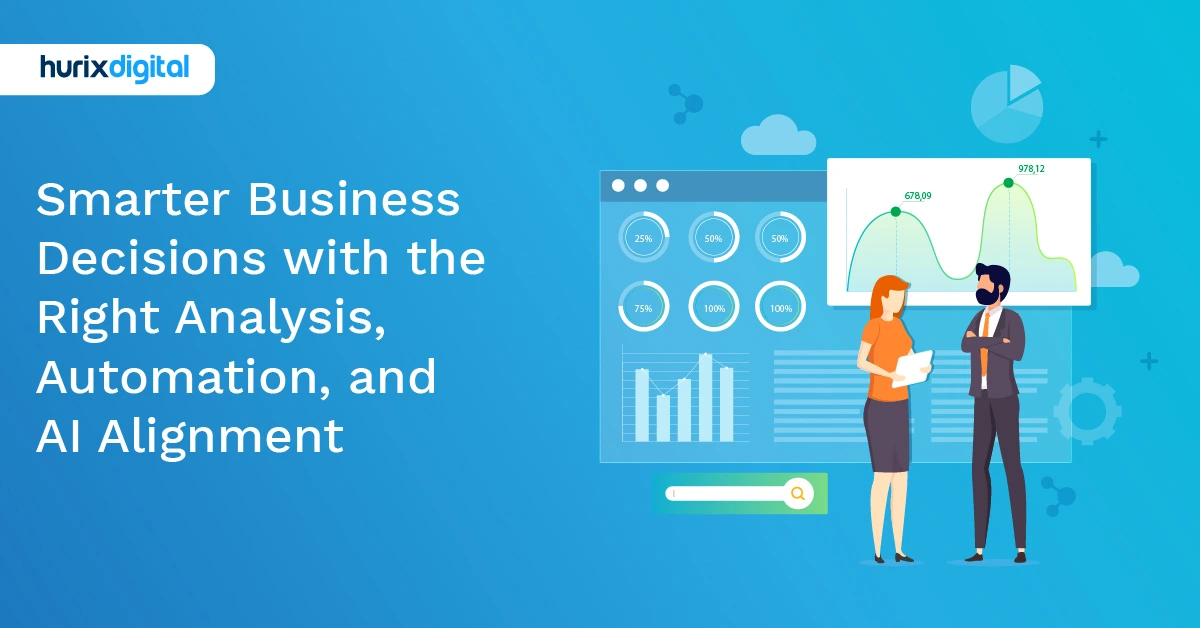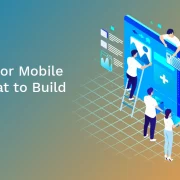
Leveraging Design Thinking for eLearning Courses
The human-centered approach to design thinking means considering the needs of the user. When applied to eLearning designing, such an approach is intuitive and functional. The course creators place themselves in learners’ shoes understand their challenges, and present solutions that make their learning experience convenient and easy.
Inculcation of design thinking in designing e-learning courses develops learning modules that are flexible, personalized, and rich in diversity of different learning styles. Let us learn more about this concept here!
Table of Contents:
- What is eLearning Design Thinking?
- Key Phases of Design Thinking in eLearning Design
- How Design Thinking Improves Modern eLearning Design?
- 6 Best Practices in Designing eLearning Courses
- How to Create Custom eLearning Content for Every Budget?
- Conclusion
What is eLearning Design Thinking?
Design thinking is a term widely used in various business settings. In eLearning, it refers to designing a course that realizes its objectives while providing added value to the learners.
Regarding eLearning, design thinking can be termed a learner-centric approach that puts learners in the focus of the course design process. It centers around human observation, needs assessment, stakeholder feedback and interviews, brainstorming sessions, and creating prototypes of ideas. Design thinking in eLearning helps develop courses tailored to achieve the learners’ and the organization’s specific performance goals.
Here are some of its key features:
- Design thinking is a problem-solving process that identifies the challenges and the end learning goals of the learners and the organization and then designs appropriate eLearning solutions.
- The content development team leverages design thinking to view a problem from a learner’s perspective, identify the learning needs, and design a solution accordingly.
- Such a solution aims to deliver a powerful eLearning experience that is right on target, helping both the learners and the organization benefit from new knowledge and skills.
Also Read: Tech-Forward Training: Integrating Digital Tools in Workforce Learning
Key Phases of Design Thinking in eLearning Design
Here are the key stages of designing eLearning courses:
- Empathize: Identify the need gap for the learner and their challenges. For this step, one would analyze the insights emerging from the surveys, feedback, and behavior analysis to develop solutions relevant to the context.
- Define: Clarify the problem. The definition of the problem leads to the next steps.
- Ideate: Brainstorming potential solutions. Good examples might include interactive assessments or gamified elements for higher engagement.
- Prototype: Develop low-fidelity prototypes of the eLearning course. This could be an outline of the whole course or even just a sample module with structured content.
- Test: Test your prototype with real learners. Gather and integrate this feedback, perfecting the course until it meets your learning objectives as effectively as possible.
How Design Thinking Improves Modern eLearning Design?
Design thinking is the new vocabulary for approaching eLearning to make it as immersive and learner-centric as possible. In the digital world, static content like PowerPoint and PDFs can no longer hold learners’ attention, as they expect more dynamic, interactive experiences such as quizzes, simulations, and personalized learning paths.
By including design thinking in the modern eLearning design process, course developers would be more concerned with learner needs so that the training will be productive and fun.
The key elements of modern eLearning design are:
1. Interactivity
Courses with interactive components such as quizzes, gamification, and role-playing scenarios will enhance learners’ engagement. Studies have shown that an interactive learning environment has as many as 25% retention rates compared to using only passive content.
2. Personalization
The content about the learner’s interests must meet diverse needs. A survey revealed that 94% of learners want more customizable learning experiences so that they are better satisfied and yield better outcomes. This encourages them to stay longer. A study by IBM found that personalized learning can increase employee productivity by up to 50%.
3. Immersive Technologies
Virtual and Augmented Reality are becoming indispensable tools for modern eLearning, creating fully immersive learning environments. The VR and AR eLearning market is expected to grow to $140.1 billion by 2026, proving an increasing demand for immersive, design-driven learning solutions.
4. Collaborative Design Approach
Modern eLearning design supported by design thinking is extremely collaborative between the instructional designer, educators, and technical experts. This ensures courses that are pedagogically valid and also keep up with technology.
Design thinking is also based on continuous testing and iteration. Engaging learners in the prototype and testing stage enables educators to obtain essential feedback on enhancing the content. As such, companies embracing the design thinking approach in eLearning lead to improved learner engagement.
Recent corporate studies have found that courses with an interactive interface and empathetic design are 90% more compelling.
Also Read: e-Learning
6 Best Practices in Designing eLearning Courses
In this post, we look at how design thinking can be leveraged in eLearning.
1. Gain a 360-Degree Perspective of the Problem
Design thinking necessitates a dramatic shift from other instructional design approaches focusing on delivering the message rather than the message itself. Therefore, design thinking involves a change in mindset—a shift in focus from authoring and learning management tools to the learner.
The key is to put yourself in the learner’s shoes and pinpoint the obstacles. This will give you an entirely new perspective and a first-hand experience of the key challenges to address while designing the eLearning course.
2. Study the Problems to Determine the Root Cause
Once you are aware of the impediments, the next step is to get to the heart of the matter, or in other words, identify the root cause of these. Design thinking is not just about conducting needs assessments, studying performance reports, or the clients’ assumptions. It is equally about instructional designers exploring the problems through one-on-one interviews and surveys to gain insights into the learners’ needs.
Then, it is necessary to understand the learners’ cultural background, the organizational culture, factors that motivate or demotivate learners, and whether they are comfortable with the new learning.
Sometimes, there may also be a need to address their insecurities; for example, the learners may resist learning about a new software because they fear it will replace them. Designing an eLearning course, therefore, doesn’t just focus on designing a solution but also creates fertile ground for the learning to find acceptance, take roots, and grow.
3. Use Innovative Thinking
The next step is to create amazing learning experiences. The way forward is to use innovation and creativity to solve the problems that learners face daily in their professional and sometimes in their personal lives. The process involves brainstorming with the development team and the client.
The design thinking approach encourages collaboration within the instructional design team and with other stakeholders to gain input and feedback and use it to design an exciting eLearning experience. Even if all ideas don’t translate into reality, innovative and out-of-the-box thinking will hold in good stead in the long run.
4. Ensure Outcomes Meet Objectives
You should now create a prototype of the solution. However, this does not mean you create a prototype for each idea. Rather, create a prototype of the eLearning deliverable that you will use to create the solution. Once it is done, share it with all stakeholders and modify it as often as required to ensure that the final solution meets learning objectives.
5. Design an Effective Learning Experience
While content is important, to design an eLearning module, you must watch every element of the course to ensure all puzzle pieces fit together seamlessly. The quality of the experience should not be an afterthought but integral to the entire design process.
Creating content based on modern pedagogical practices, the use of technology the users are familiar with, and the accessibility of the course of all device types are essential elements in designing eLearning modules.
6. Seek Feedback
To ensure that your learners are getting the most out of the eLearning experience, you need to constantly seek feedback from your target audience. Feedback and evaluations help you understand what activities and tools are making the maximum impact and what weak areas need to be addressed. Such feedback will help you fine-tune your craft as you move forward.
How to Create Custom eLearning Content for Every Budget?
Design thinking in eLearning is an innovative approach that puts learners at the center of the learning experience. Let us look at some of the key ways in which you can create modern eLearning designs:
- Modern eLearning design shifts focus from how to deliver the message to the message itself.
- Accordingly, instructional designers first analyze the needs to understand the learners’ specific learning goals and the client’s objectives.
- The needs analysis is not conducted solely based on questionnaires and surveys but also through on-site visits to observe human behavior and read the finer details.
- Another important aspect of designing eLearning modules is constantly brainstorming with the development team and other stakeholders to fine-tune the solution as it evolves.
This attention to detail sets eLearning apart from all other instructional approaches.
Also Read: Inclusive Learning to Address the Diverse Needs in Workforce Development
Conclusion
Therefore, eLearning requires the design team to be well-versed in all modern pedagogical practices and the latest tools and technologies and go beyond the ability to observe and interpret human behavior.
It also involves innovative and creative thinking, listening, understanding, and observing. Accordingly, the design team must design eLearning solutions that engage the learners and enable them to transfer knowledge to the workplace. Join our team of experts at Hurix Digital, dedicated to creating engaging and impactful e-learning solutions that empower learners to thrive in the workplace.





